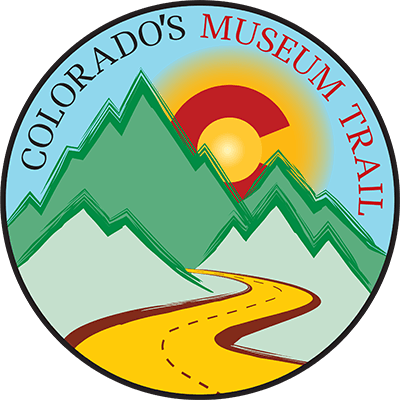Bone appétit: The story of Alferd Packer, Colorado’s most infamous, yet beloved, cannibal
November 4, 2020
By Stephanie Butzer
The Denver Channel
As the first fingers of spring started to peel back winter’s hold in 1874, a man staggered out of the mountains and into Lake City, ready to spill a story — or two, or three — that few would believe. He’d quickly become known as the Colorado Cannibal.
It’s a tale as puzzling as it is horrific, and somehow, from the safe distance of about 150 years, humor has wiggled its way in.
His name was Alferd Packer.
Recognize the name, or perhaps know his story? He became somewhat of a Colorado celebrity in the mid-1900s, when you could find the Packer name in everything from a wilderness cookbook title to a festival name to a musical created by CU Boulder students. People learned of his story and instead of turning away in disgust, they leaned into it. Unabashedly embraced it.
An article from April 1984 in The Washington Post captured the absurdity in one of its opening paragraphs: “In the days before bean sprouts and granola, when the West was raw and men ate men, Packer chewed his way into the hearts of Coloradans by devouring five gold-seeking companions.”
Of course, under the silliness is the much darker story of how those five men met their horrific demise in the freezing, lonely mountains.
The particulars around what actually happened are foggy at best. Packer was the only one from the group to live to tell the tale and he told several. And those details are now buried — and in some instances, altered — under 150 years of history. To dig up what happened, we turned to the details in official court documents and the ink-smudged columns of the local newspapers, both from the late 1800s.
These documents have preserved countless moments from the case, such as Packer’s statement about his alleged crimes as he stood in front of a courthouse packed with people who were no doubt fascinated that a cannibal was in their midst and wondering if he’d get his just desserts.
Even in those moments, just before his sentencing, it was not absolutely certain if Packer had planned to eat the men through a twisted, murderous mind or if it just unfolded that way in an equally desperate and reluctant struggle for survival.
But either way, he had surely bit off more than he could chew.
Introducing Alferd Packer, Colorado’s Cannibal
Packer’s story starts in Allegheny County, Pennsylvania. According to the April 20, 1883 edition of the Lake City Mining Register, he was born on Jan. 31, 1842, though other reports list his birthdate as Nov. 21 of that year.
Andrew Gulliford, a professor of southwest studies and history at Fort Lewis College in Durango, said Packer was “a little bit of a drifter” and possibly a Civil War veteran. The Washington Post wrote in a June 8, 1989 article that Packer was discharged from the Union Army in 1862 for epilepsy. While he re-enlisted in another regime, he was discharged for the same reason, according to the City of Littleton.
In an unproven story, but one widely spread, a young Packer visited a tattoo artist who made the permanent error of inking “Alferd” instead of “Alfred” on Packer’s skin. He apparently embraced the typo and ended up adopting the name, though his first name, legally, remained Alfred, per court records.
Between 1863 and 1873, Packer moved west to pursue multiple jobs varying from hunting and trapping to guiding and mining, according to the Hinsdale County Museum in Lake City.
Gulliford said Packer was just one of the thousands of drifters who decided to embark on that journey.
In his early 30s, Packer volunteered to guide a group of 21 men through the Rocky Mountains starting in the area around Salt Lake City, Utah, despite having no weapons, little food or provisions, and limited skills. Reports vary on their final destination — most reports say they were bound for the Los Piños Indian Agency outside Saguache, others say they were headed for present-day Breckenridge.
They were set to start the long journey late in 1873.
Just in time for a nightmarish snowstorm.
‘Then, we gave up to die’
Packer’s stories start about the same — all of them.
He led the group to Ute Indian Chief Ouray’s winter camp near modern-day Montrose, arriving in late January 1874, according to the Hinsdale County Museum.
Knowing another party had left the camp and successfully made it to Los Piños Indian Agency, Packer said he thought his group could do the same. Only five others decided to take the risk with him. Those men were Frank Miller, Wilson Bell, James Humphreys, George Noon and Israel Swan.
The six men took advantage of Chief Ouray’s shelter and food for a few days and left to continue the journey in early February 1874.
It was the last time five of those men were seen alive.
On April 16, 1874, as winter gave way to spring, Packer emerged from the mountains, according to reports in the Lake City Mining Register. He was alone.
Read more...
The Denver Channel
As the first fingers of spring started to peel back winter’s hold in 1874, a man staggered out of the mountains and into Lake City, ready to spill a story — or two, or three — that few would believe. He’d quickly become known as the Colorado Cannibal.
It’s a tale as puzzling as it is horrific, and somehow, from the safe distance of about 150 years, humor has wiggled its way in.
His name was Alferd Packer.
Recognize the name, or perhaps know his story? He became somewhat of a Colorado celebrity in the mid-1900s, when you could find the Packer name in everything from a wilderness cookbook title to a festival name to a musical created by CU Boulder students. People learned of his story and instead of turning away in disgust, they leaned into it. Unabashedly embraced it.
An article from April 1984 in The Washington Post captured the absurdity in one of its opening paragraphs: “In the days before bean sprouts and granola, when the West was raw and men ate men, Packer chewed his way into the hearts of Coloradans by devouring five gold-seeking companions.”
Of course, under the silliness is the much darker story of how those five men met their horrific demise in the freezing, lonely mountains.
The particulars around what actually happened are foggy at best. Packer was the only one from the group to live to tell the tale and he told several. And those details are now buried — and in some instances, altered — under 150 years of history. To dig up what happened, we turned to the details in official court documents and the ink-smudged columns of the local newspapers, both from the late 1800s.
These documents have preserved countless moments from the case, such as Packer’s statement about his alleged crimes as he stood in front of a courthouse packed with people who were no doubt fascinated that a cannibal was in their midst and wondering if he’d get his just desserts.
Even in those moments, just before his sentencing, it was not absolutely certain if Packer had planned to eat the men through a twisted, murderous mind or if it just unfolded that way in an equally desperate and reluctant struggle for survival.
But either way, he had surely bit off more than he could chew.
Introducing Alferd Packer, Colorado’s Cannibal
Packer’s story starts in Allegheny County, Pennsylvania. According to the April 20, 1883 edition of the Lake City Mining Register, he was born on Jan. 31, 1842, though other reports list his birthdate as Nov. 21 of that year.
Andrew Gulliford, a professor of southwest studies and history at Fort Lewis College in Durango, said Packer was “a little bit of a drifter” and possibly a Civil War veteran. The Washington Post wrote in a June 8, 1989 article that Packer was discharged from the Union Army in 1862 for epilepsy. While he re-enlisted in another regime, he was discharged for the same reason, according to the City of Littleton.
In an unproven story, but one widely spread, a young Packer visited a tattoo artist who made the permanent error of inking “Alferd” instead of “Alfred” on Packer’s skin. He apparently embraced the typo and ended up adopting the name, though his first name, legally, remained Alfred, per court records.
Between 1863 and 1873, Packer moved west to pursue multiple jobs varying from hunting and trapping to guiding and mining, according to the Hinsdale County Museum in Lake City.
Gulliford said Packer was just one of the thousands of drifters who decided to embark on that journey.
In his early 30s, Packer volunteered to guide a group of 21 men through the Rocky Mountains starting in the area around Salt Lake City, Utah, despite having no weapons, little food or provisions, and limited skills. Reports vary on their final destination — most reports say they were bound for the Los Piños Indian Agency outside Saguache, others say they were headed for present-day Breckenridge.
They were set to start the long journey late in 1873.
Just in time for a nightmarish snowstorm.
‘Then, we gave up to die’
Packer’s stories start about the same — all of them.
He led the group to Ute Indian Chief Ouray’s winter camp near modern-day Montrose, arriving in late January 1874, according to the Hinsdale County Museum.
Knowing another party had left the camp and successfully made it to Los Piños Indian Agency, Packer said he thought his group could do the same. Only five others decided to take the risk with him. Those men were Frank Miller, Wilson Bell, James Humphreys, George Noon and Israel Swan.
The six men took advantage of Chief Ouray’s shelter and food for a few days and left to continue the journey in early February 1874.
It was the last time five of those men were seen alive.
On April 16, 1874, as winter gave way to spring, Packer emerged from the mountains, according to reports in the Lake City Mining Register. He was alone.
Read more...

Have a taste of the historic Hispanic homeland in San Luis Valley through the new book Teresa de Jesus Vigil: Herbalist, Storyteller, Poet at her book signing at Rawlings Library, 100 Abriendo Ave, Pueblo, on June 23, 6 pm and at Fort Garland Museum and Cultural Center on July 10, 1:30 pm.Teresa Vigil will give a short presentation on herbs and read from her book published by Vanishing Horizons. Her cultural perspective and life-long medical experiences make her presentations compelling.Teresa [...]

An historic mining structure near Creede. Photo by Terri Cook Article originally published in 5280 article by Terri Cook"The Scenic Highway of Legends and Silver Thread, which were recently added to the National Scenic Byway system, celebrate southern Colorado's stunning landscapes and rich history.Call it the stuff of legend: Colorado’s scenery is so spectacular that the U.S. Department of Transportation recently added two of the state’s roadways to the America&rs [...]

Downtown Colorado, Inc. (DCI) and the Town of Center are pleased to announce the Solstice in Center, a creative event to engage and invite makers, artists, restaurants, and community members to celebrate the changing of season, the creative spirit, and envision the future of Downtown Center.The Solstice in Center event will kick off at 12 Noon on June 19 and will feature a dynamic lineup of San Luis Valley creatives. Some of the entertainment includes “Colorado’s Best Latin U [...]

Attached is a PDF of the Rio Grande County Museum Newsletter for June and July 2021.Featured articles and updates include:The Annual Art ShowWorld Ward II ExhibitArt Show with Amanda BlackLyndsie FerrellHigh Valley Community StudentsVolunteersSummer Programs and EXhibitsInterviews from the Past rgcm-2021-june-newsletter.pdfFile Size: 484 kbFile Type: pdfDownload File [...]

Original article from the Rocky Mountain PBSby Kate PerdoniPosted May 27, 2021“People like us are not Native American enough. And we’re not American enough. And we’re not Mexican enough,” Rael said. “And so we walk this strange line of trying to decipher our identities. And we express them in different ways.”Watch the video [...]

Original post by Rocky Mountain PBSPosted May 25th, 2021by Kate PerdoniJunita Martinez, a resident of the small village of San Francisco [in Southern Colorado], hopes educating the next generation of parciantes will help sustain water rights and the acequia tradition. Here, irrigation canals dug by hand almost 200 years ago are still used — but nature decides how much water they have to work with.Water Is Life - "We're a land and water based people. I am [...]

Original article published in the Valley CourierMay 24, 2021To train buffs around the world, it’s an unprecedented historic moment. For the first time ever, a steam locomotive from the 1880s has been completely restored and will run on the exact same tracks it originally did from 1883-1938. The Cumbres & Toltec Scenic Railroad , owned jointly by the states of Colorado and New Mexico, has completed this historic project and will unveil the remarkably restored engine No. 168 at t [...]

Contributed photo Billy LeRoy and his brother Sam Potter were buried in unmarked graves in the Del Norte Cemetery. Only one headstone remains today. by Lyndsie Ferrell from the Del Norte ProspectorNow, Billy LeRoy was not your typical looking criminal. The young highwayman was known for dressing on the up-scale side and one of his most infamous traits that kept lawmen guessing who he was, was his size four shoe.At many of the locations where LeRoy held up a train or stagecoach, lawmen would find [...]

Image courtesy The Newberry Library. https://www.newberry.org by Lyndsie Ferrell with the Del Norte ProspectorThe San Luis Valley has a rich history dating back to the early 1800s thanks to the many characters that lived rough and tumble lives in the great West. Lawlessness was a way of life for many in those early days and like the song by Jim Croce, “Bad, Bad Leroy Brown” the San Luis Valley had a bad, bad LeRoy of its own.According to accounts provided by the Rio Grande County Mu [...]

Photo credit: John McEvoy Special to The Colorado Sun "Experts from across the country converged to restore Engine 168 for the Cumbres & Toltec Scenic Railroad straddling the Colorado-New Mexico border.When Engine 168 chugs away from the station here in late June with about 60 passengers ensconced in four refurbished 19th century train cars, it will be the culmination of years of dreams, historic preservation work and an investment of nearly $4 million. And perhaps less visible [...]



